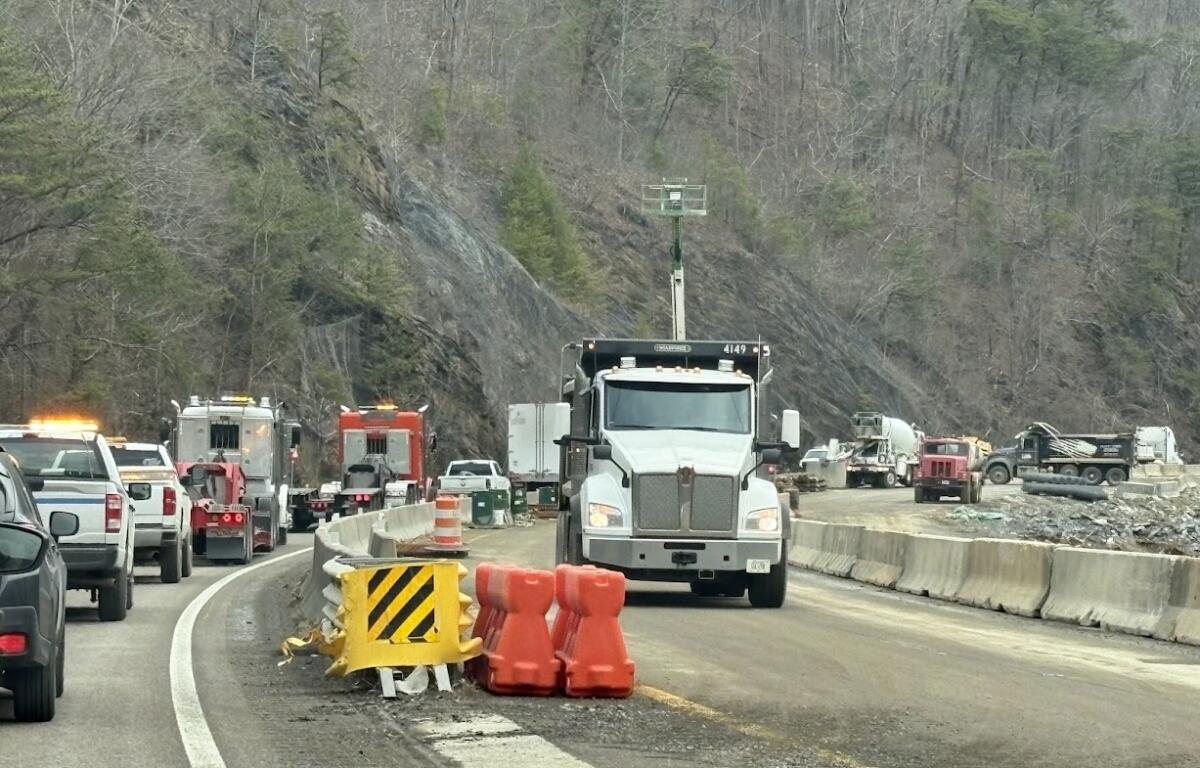HAYWOOD COUNTY, N.C. (828newsNOW) — The North Carolina Department of Transportation and its federal and state partners have selected two sites in the Pigeon River Gorge to extract and store material for rebuilding Interstate 40, which was severely damaged by Hurricane Helene.
The plan includes a nearly 33-acre site for extracting stone and an adjacent 11.5-acre area for storing overburden material, which will later be used to restore the extraction site. Both sites are in Pisgah National Forest near the eastern edge of the I-40 damage zone.
“The coordination between all agencies and stakeholders in the area has been tremendous and provides a great start to reconstruction of this critical corridor,” NCDOT Division 14 Engineer Wesley Grindstaff in a news release. “This decision will have the lowest impact on the long-term health of the forest out of all the possible sites.”
Selecting nearby sites will significantly reduce construction costs and timelines, according to NCDOT. The plan is also expected to improve safety by minimizing the number of heavy truck trips through the area’s two-lane detour.
The Federal Highway Administration obtained a temporary land transfer from the USDA Forest Service to allow for extraction. A Special Use Permit authorized NCDOT to evaluate seven potential sites.
“The U.S. Department of Transportation is committed to helping North Carolina rebuild, and, with this site selection, we are one step closer to rebuilding I-40 at lightning speed,” U.S. Transportation Secretary Sean P. Duffy said in the release. “Thanks to our strong federal and state partnerships, we are delivering results in record time.”
The site selection process involved environmental reviews, cultural resource surveys, traffic access planning and coordination with other agencies, including the U.S. Army Corps of Engineers, U.S. Fish and Wildlife Service, N.C. Division of Water Resources and N.C. Wildlife Resources Commission.
“The efforts to rebuild I-40 are critical to the long-term recovery of Western North Carolina,” Forest Supervisor James Melonas of the National Forests in North Carolina said. “Once this critical work is complete, we will have the opportunity to improve ecological resiliency through forest restoration, as well as improve game and aquatic habitats.”
Crews spent the winter stabilizing 10 locations along a 4-mile stretch of the interstate. A traffic shift to two westbound lanes, each carrying one direction of traffic, was completed on March 1.
Work is ongoing to complete a causeway along the river that will allow access for geotechnical data collection and construction of retaining walls without further road closures. A temporary bridge, haul road improvements and site preparations are scheduled for later this summer, pending permit approvals.
Material from the site will be used to build retaining walls using roller-compacted concrete and interlocking O-pile wall systems.
“We are pleased that we have reached another milestone on this long path to reconstruction,” Grindstaff said. “NCDOT and our partners will continue working in the gorge and on designs to build the best facility possible.”


